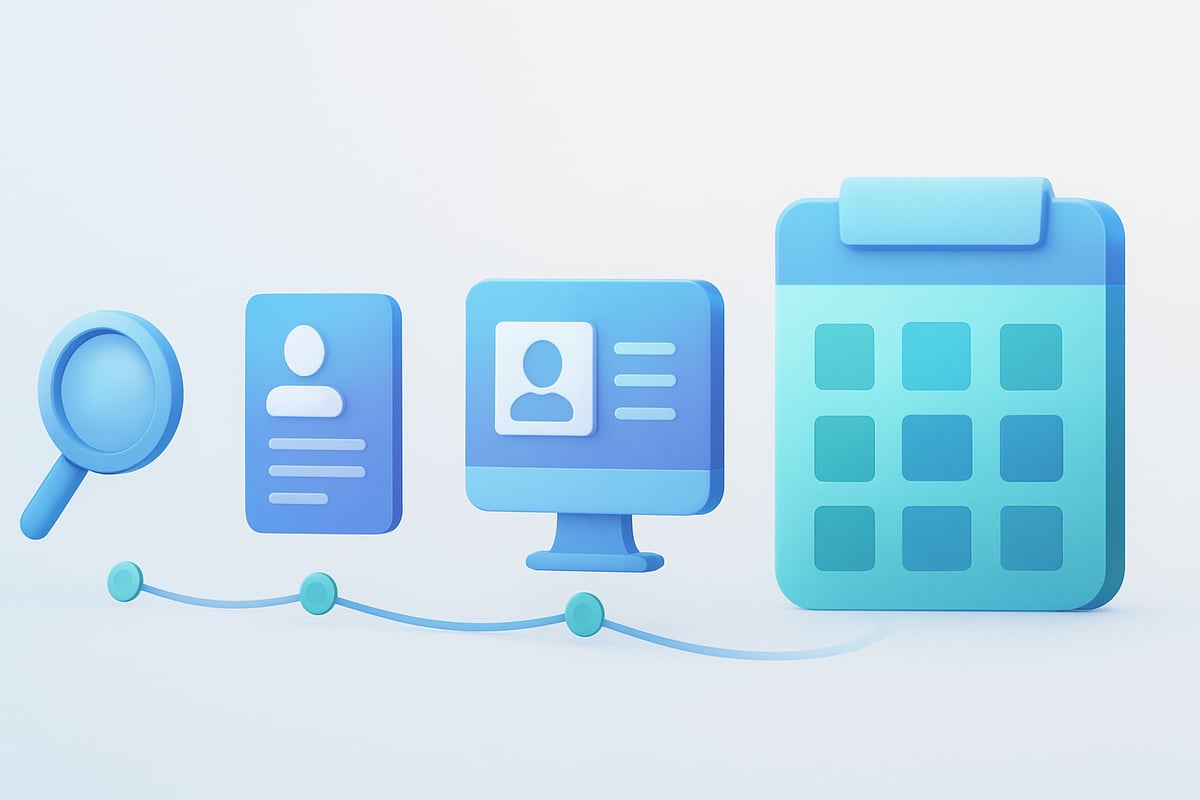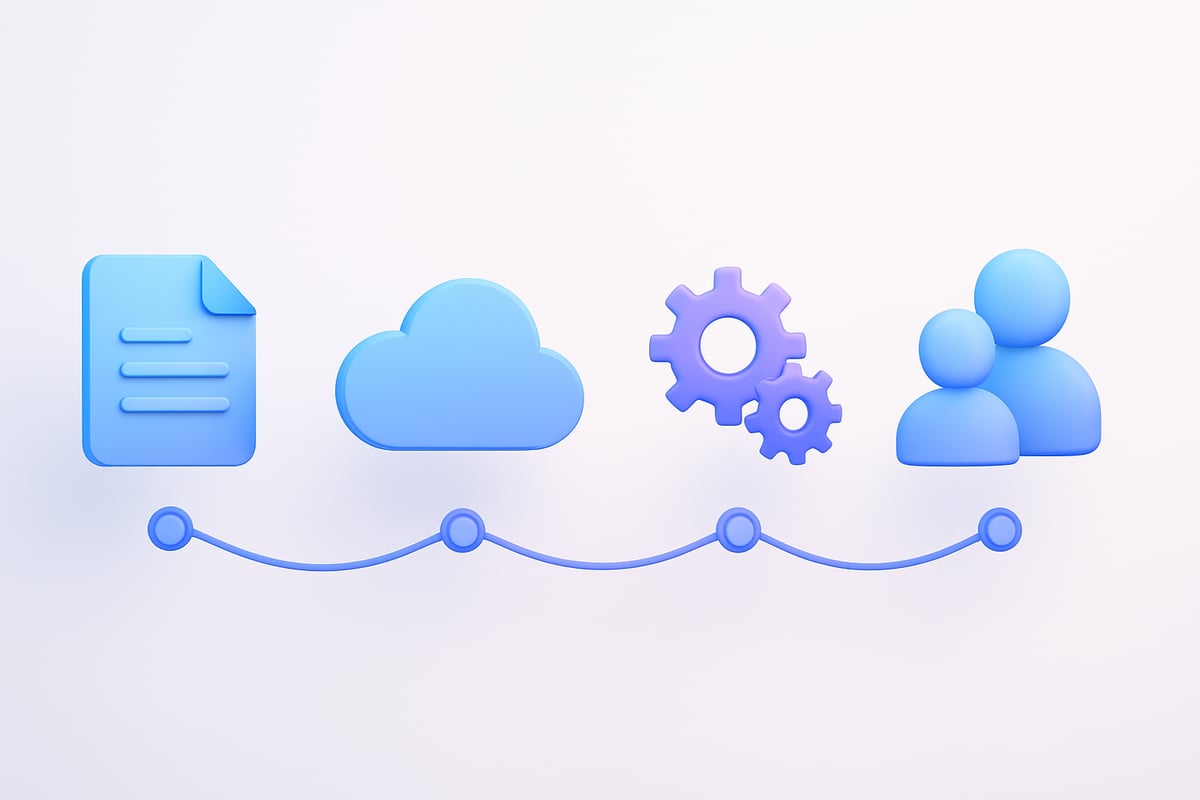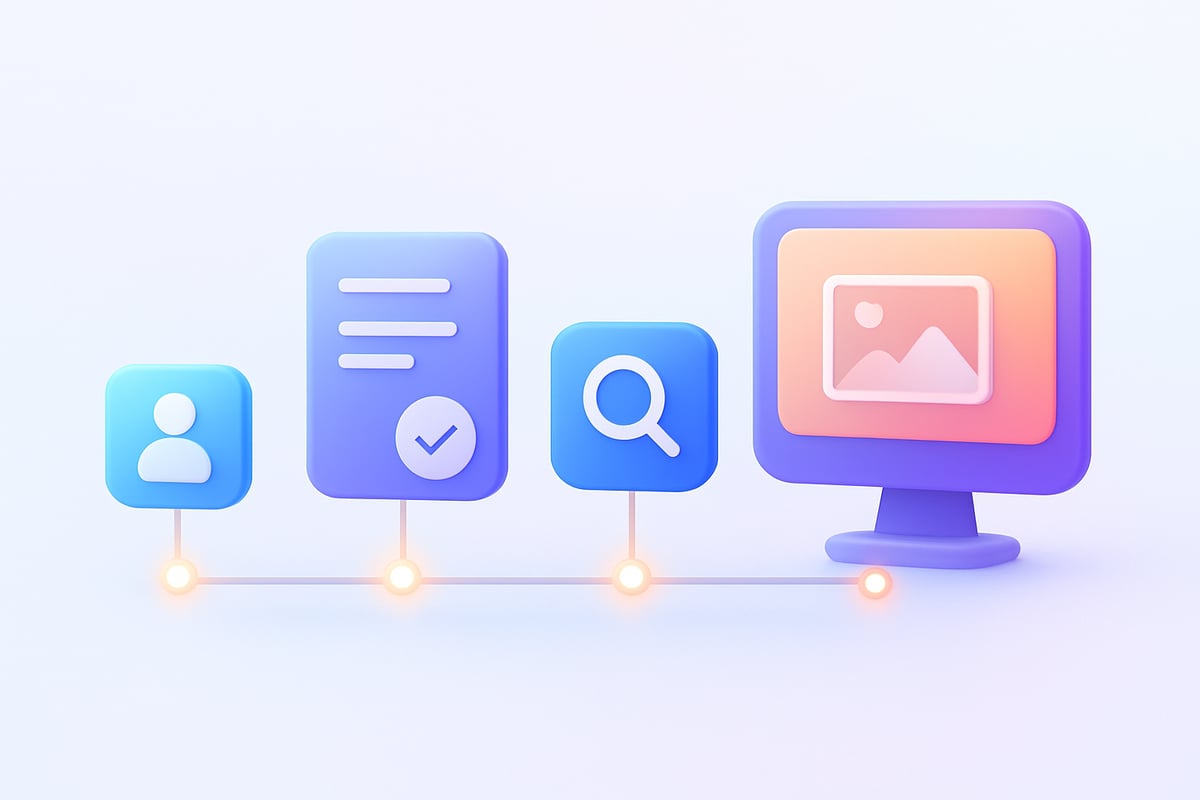November 11, 2025
The Essential HR Applicant Tracking Guide for 2025
Imagine reviewing hundreds of resumes for a single role, only to realize your top talent slipped through the cracks. In 2025, talent acquisition is more complex than ever, making hr applicant tracking essential for staying ahead.
This comprehensive guide is designed for HR professionals ready to master the latest applicant tracking systems. With technology and AI transforming recruitment, understanding these tools is crucial for building a competitive hiring process.
We will explore ATS fundamentals, cutting-edge features, step-by-step implementation, optimization strategies, and future trends. Each section is tailored to help you streamline hiring and make smarter decisions.
Ready to elevate your recruitment strategy? Dive into the guide and unlock the full potential of hr applicant tracking.
Understanding Applicant Tracking Systems in 2025
In 2025, the landscape of hr applicant tracking has become a cornerstone of effective talent acquisition. An applicant tracking system (ATS) is specialized software that enables HR teams to streamline and automate the recruitment process. These systems serve as the digital backbone for managing job postings, tracking applicants, and ensuring that every candidate interaction is logged and accessible.
Over the past decade, hr applicant tracking technology has evolved rapidly. Modern ATS platforms now leverage artificial intelligence and automation to handle complex recruitment tasks. This shift empowers HR professionals to focus on strategic decision-making while the system manages repetitive screening and administrative duties. AI-driven features are no longer optional but essential in staying competitive within the talent market.
Without a robust hr applicant tracking solution, organizations face significant challenges. Manual screening of resumes is time-consuming and often leads to missed opportunities or overlooked talent. Compliance risks rise when tracking and storing candidate data manually, especially under strict regulations like GDPR. The absence of automation also causes delays, resulting in longer time-to-hire and frustrated candidates.
Recent data highlights the widespread adoption and impact of hr applicant tracking systems. According to Key ATS adoption statistics, more than 98% of Fortune 500 companies now rely on ATS platforms. These systems have reduced time-to-hire by up to 50% and significantly improved candidate quality by ensuring consistent evaluation standards.
The core functions of an ATS include resume parsing, automated candidate ranking, and workflow management. Resume parsing extracts relevant information, while ranking algorithms prioritize the best-fit applicants for each role. Workflow automation ensures that every stage of the hiring process, from initial screening to final offer, is tracked and managed efficiently. Industries ranging from healthcare to technology rely on these systems to fill roles quickly and compliantly.
Despite their advantages, some misconceptions persist around hr applicant tracking. Concerns about bias or over-automation are common. However, modern ATS solutions are designed to minimize bias through anonymized screening and transparent algorithms. They also allow human oversight at key decision points, ensuring a balanced approach between automation and personal judgment.
Today, mastering hr applicant tracking is not just about adopting technology but leveraging it to create a seamless, efficient, and fair recruitment experience for both candidates and employers.

Step-by-Step Guide to Implementing an ATS in 2025
Implementing a successful hr applicant tracking solution in 2025 requires a clear, methodical approach. HR professionals must navigate technology, change management, and integration hurdles to unlock the full potential of an ATS. The following guide breaks down each phase, ensuring your team achieves a smooth transition and maximizes return on investment.

Assessing Organizational Needs and Setting Objectives
Start your hr applicant tracking journey with a thorough review of your current recruitment workflows. Map out every step, from job requisition to onboarding, and pinpoint inefficiencies or bottlenecks. Common pain points include manual data entry, inconsistent candidate evaluations, and limited reporting capabilities.
Set measurable, strategic goals for your new ATS. These might include reducing time-to-hire by 30 percent, improving candidate diversity, or enhancing hiring team collaboration. Leading HR teams often use frameworks like SMART (Specific, Measurable, Achievable, Relevant, Time-bound) or OKRs (Objectives and Key Results) to define success. For example, a company aiming to boost diversity may set an objective to increase underrepresented group hires by 15 percent within a year.
Involve stakeholders across HR, IT, and business units early. Their input helps ensure the hr applicant tracking system you select will align with broader organizational priorities and user needs.
Selecting the Right ATS Platform
Choosing the best hr applicant tracking platform means evaluating both current requirements and future growth. Consider scalability, ease of use, integration with existing HRIS or payroll systems, and the vendor's reputation for support. Cloud-based solutions are increasingly favored for their flexibility, automatic updates, and lower upfront costs.
Prioritize platforms offering robust analytics, AI-driven candidate ranking, and customizable workflows to fit your company's unique hiring needs. User interface and mobile accessibility are key for adoption, especially for distributed teams. Compare on-premise and cloud options, keeping data security and compliance in mind.
To streamline your evaluation, review independent analyst reports and seek peer recommendations. For a detailed side-by-side breakdown of leading ATS platforms, consult resources like Best Applicant Tracking Software Comparison. This ensures your hr applicant tracking investment remains future-proof and aligned with industry standards.
Data Migration and System Integration
A seamless transition to your new hr applicant tracking system hinges on careful data migration and integration planning. Begin by auditing legacy data, identifying duplicates or outdated information, and cleaning records for accuracy. Work closely with IT to ensure all candidate data, historical notes, and attachments are securely transferred.
Integrate your ATS with core HRIS, payroll, and communication tools to enable smooth information flow and minimize manual entry. Pay special attention to data privacy and compliance requirements, such as GDPR or EEOC regulations, throughout this phase. Conduct thorough security checks, confirm encryption protocols, and restrict sensitive access with role-based permissions.
Consider the example of a mid-market company that achieved a near-zero error migration by running parallel systems during the first month. Regular audits and automated syncs helped maintain hr applicant tracking data integrity and minimized disruption for recruiters.
Training, Testing, and Launch
Successful hr applicant tracking adoption depends on comprehensive training and phased rollout. Develop training programs tailored for recruiters, hiring managers, and administrators, focusing on practical use cases and troubleshooting. Use a mix of live demos, recorded tutorials, and hands-on practice sessions to boost user confidence.
Pilot test the ATS with a small group to identify issues and collect feedback. Adjust workflows, permissions, and templates based on real usage before organization-wide deployment. Encourage open communication channels for ongoing support and rapid resolution of early challenges.
After launch, monitor adoption rates and team satisfaction closely. Continuous learning and feedback loops ensure the hr applicant tracking system evolves with your organization, driving sustainable hiring improvements.
Optimizing Your ATS for Maximum Hiring Success
Optimizing your hr applicant tracking solution goes far beyond initial setup. Once implemented, the real value comes from continuous refinement and strategic use of advanced features. As recruitment challenges evolve in 2025, HR teams must unlock the full potential of their ATS to stay competitive. Let us explore how to turn your system into a powerhouse for hiring success.

Leveraging AI and Automation Features
Artificial intelligence is revolutionizing hr applicant tracking by streamlining how recruiters identify top talent. AI-powered resume parsing and candidate ranking now analyze thousands of applications in seconds, surfacing the most qualified matches based on skills, experience, and culture fit. Automation tools handle repetitive tasks, such as scheduling interviews or sending status updates, freeing recruiters to focus on relationship-building.
Industry data shows that AI-driven features can boost recruiter productivity by up to 50 percent, while also improving candidate quality. For example, automated screening helps reduce unconscious bias by evaluating applicants on objective criteria. By integrating tools like chatbots and smart recommendations, your hr applicant tracking system can deliver faster, more consistent hiring decisions.
For a deeper look at how these features work in practice, explore this Applicant Tracking System ATS Software overview. Leveraging these innovations ensures your team stays ahead in the competitive talent landscape.
Using Analytics to Drive Recruitment Decisions
Analytics dashboards within hr applicant tracking platforms provide a wealth of actionable insights for HR teams. By monitoring metrics such as source effectiveness, time-in-stage, and candidate drop-off rates, you can identify bottlenecks in your process and adjust sourcing strategies for better results.
Data-driven decision making is transforming recruitment. For instance, a company might discover that candidates from certain job boards move faster through the pipeline or that a particular interview stage causes unnecessary delays. Adjusting these touchpoints can cut time-to-hire by 30 percent or more.
With hr applicant tracking analytics, you not only improve efficiency but also enhance the candidate experience. Regularly reviewing KPIs, like cost-per-hire and conversion rates, helps you measure progress and refine your approach for continuous improvement.
Customizing Workflows and Communication
No two organizations have identical recruitment processes, so customizing your hr applicant tracking workflows is essential. Tailor stages, evaluation criteria, and approval chains to fit the unique needs of each department or job family. This flexibility allows hiring teams to move candidates efficiently through relevant steps.
Personalized communication is also key. Automated yet tailored messages keep candidates engaged, informed, and positive about your employer brand. Many companies report improved candidate Net Promoter Scores after implementing customized workflows and proactive communication through their hr applicant tracking systems.
By aligning your processes with organizational goals and departmental nuances, you foster collaboration and transparency across hiring teams. This approach results in a more agile and responsive recruitment function.
Ensuring Compliance and Data Security
Compliance is a top priority for any hr applicant tracking deployment. Modern systems help you adhere to regulations like GDPR and EEOC by offering features such as automated consent management, secure data storage, and detailed audit trails. Role-based access ensures that sensitive candidate information is only visible to authorized users.
During audits, organizations with robust hr applicant tracking systems can easily demonstrate compliance, minimizing risk and building trust with candidates. For example, a company that passed a recent data privacy audit credited its ATS’s automated compliance features for the smooth outcome.
Prioritizing security and regulatory alignment not only protects your business but also enhances your reputation as a responsible employer. Continuous monitoring and updates keep your system resilient against emerging threats.
The Future of Applicant Tracking: Trends and Innovations for 2025
The landscape of hr applicant tracking is rapidly evolving in 2025, driven by innovation and shifting workforce expectations. HR professionals must stay ahead of these changes to attract top talent and remain competitive. From AI-powered insights to seamless remote hiring tools, the future of hr applicant tracking is set to redefine how companies find, evaluate, and engage candidates.

AI and Predictive Analytics in Recruitment
Artificial intelligence is revolutionizing hr applicant tracking by delivering deeper insights into candidate potential, job fit, and long-term retention. Predictive analytics now enables recruiters to identify high-potential applicants earlier in the process, reducing guesswork and improving outcomes. These tools analyze patterns in historical hiring data, assess skills, and even forecast future performance.
Recent research shows AI accuracy in screening and ranking candidates continues to improve. For example, algorithms can now flag top talent and suggest the best communication strategies for each applicant. The integration of AI also helps mitigate unconscious bias by focusing on objective data points. For a deeper look at these advancements, see AI's role in talent acquisition.
With hr applicant tracking systems leveraging these capabilities, organizations are realizing faster time-to-hire, better quality-of-hire, and more strategic decision-making.
Video Interviewing and Skills Assessments Integration
In 2025, hr applicant tracking platforms are embedding video interview tools and automated skills assessments directly into their workflows. This integration streamlines the screening process and creates a more consistent candidate evaluation experience.
Recruiters can now invite applicants to complete one-way video interviews and skills tests within the same platform. This saves time, reduces scheduling conflicts, and enables standardized scoring. Candidates also benefit from flexibility, as they can complete assessments at their convenience.
Companies adopting these features report a significant improvement in quality-of-hire and time savings. By centralizing these steps within hr applicant tracking systems, hiring teams gain a holistic view of each applicant’s abilities and fit.
Diversity, Equity, and Inclusion Tools
Modern hr applicant tracking systems are placing a strong emphasis on diversity, equity, and inclusion. Advanced DEI features help reduce bias and promote fair screening processes. Anonymized resume review hides identifying information, allowing recruiters to focus solely on skills and experience.
Inclusive language analysis tools ensure job descriptions attract a wider pool of talent. Real-time DEI dashboards track metrics such as gender, ethnicity, and interview progression, supporting organizational diversity goals.
Case studies highlight organizations achieving measurable improvements in DEI outcomes by leveraging these tools. The future of hr applicant tracking is not only about efficiency but also about building more equitable workplaces.
Adapting to Remote and Hybrid Recruitment
The shift to remote and hybrid work has fundamentally changed hr applicant tracking requirements. Platforms are evolving to support distributed hiring teams, virtual onboarding, and remote candidate engagement.
Mobile-first design ensures that both recruiters and applicants can access the system from anywhere. Collaboration features, such as shared notes and real-time chat, keep teams aligned regardless of location.
HR leaders managing global recruitment emphasize the need for flexible, scalable solutions. As remote work becomes standard, hr applicant tracking systems that prioritize accessibility and seamless communication will set organizations apart in the digital age.
Choosing the Right ATS Partner: Evaluation, Support, and ROI
Selecting the right hr applicant tracking partner is a pivotal decision for any HR team in 2025. The stakes are high: your choice impacts hiring efficiency, candidate experience, compliance, and long-term workforce strategy. With the market evolving rapidly, the right ATS partner can help you stay ahead, streamline processes, and deliver measurable business value. This section will guide you through every step of the vendor selection process, ensuring your hr applicant tracking investment pays dividends for years to come.
Vendor Evaluation and Due Diligence
Evaluating vendors for your hr applicant tracking solution begins with thorough research. Start by identifying your organization’s core requirements, including integration needs, security standards, and industry-specific compliance. Request detailed product demos and involve key stakeholders from HR, IT, and legal to assess usability and alignment with your workflows.
Check references from current clients, focusing on companies of similar size or sector. Analyst reports, such as those from Gartner and Forrester, can shed light on vendor reputation, innovation, and customer satisfaction. Third-party reviews on platforms like G2 or Capterra provide candid user feedback on support responsiveness, feature reliability, and updates.
During the due diligence phase, review service-level agreements (SLAs) covering uptime, data protection, and support timelines. Ask vendors for case studies or testimonials that demonstrate successful long-term partnerships and proven results. A careful, methodical approach ensures your hr applicant tracking vendor can meet your organization’s evolving needs.
Calculating ROI and Business Impact
Measuring the return on investment from an hr applicant tracking system requires a clear understanding of both direct and indirect benefits. Key metrics include reduced cost-per-hire, shorter time-to-fill, improved candidate quality, and better retention rates. Leading organizations often see quantifiable savings within the first year, thanks to automation, improved collaboration, and data-driven decision-making.
To project long-term business impact, consider how AI-powered features can enhance your recruitment process. For a deeper dive, explore AI in Talent Acquisition to see how automation and intelligent analytics elevate ATS ROI. Calculate the total cost of ownership, including licensing, implementation, integration, and training, against anticipated gains in efficiency and candidate experience.
A compelling business case will help secure executive buy-in and ensure sustained investment in your hr applicant tracking platform. Use real-world examples to illustrate anticipated improvements and set clear benchmarks for success.
Scalability and Future-Proofing Considerations
Scalability is essential when choosing an hr applicant tracking solution that will support your organization’s growth. Assess each platform’s ability to handle increasing volumes of candidates, new roles, and expanded locations. Look for modular features that can be added as your needs evolve, as well as robust APIs to integrate with emerging HR or business technologies.
Future-proofing your investment means selecting a partner committed to innovation. Regular platform updates, a clear product roadmap, and a track record of adopting new technologies—such as AI, analytics, and mobile-first design—are critical. Evaluate the vendor’s ability to adapt to regulatory changes and shifting recruitment trends.
By prioritizing scalability and adaptability, you can ensure that your hr applicant tracking system remains an asset well into the future, supporting not just today’s needs but tomorrow’s opportunities.
Ongoing Support and Community Resources
Comprehensive post-implementation support is a cornerstone of successful hr applicant tracking adoption. Responsive customer service, detailed knowledge bases, and dedicated account managers help resolve issues quickly and keep your processes running smoothly. Access to user communities and peer forums provides a space to share best practices and learn from others’ experiences.
Continuous learning is vital as features evolve and recruitment strategies shift. Leading vendors offer regular training sessions, webinars, and resource libraries to help your team stay current. Organizations that leverage these support structures often see faster optimization, better user adoption, and higher satisfaction rates.
A strong support network ensures your hr applicant tracking investment delivers ongoing value, adapts to new challenges, and empowers your HR team to achieve sustained hiring excellence.
